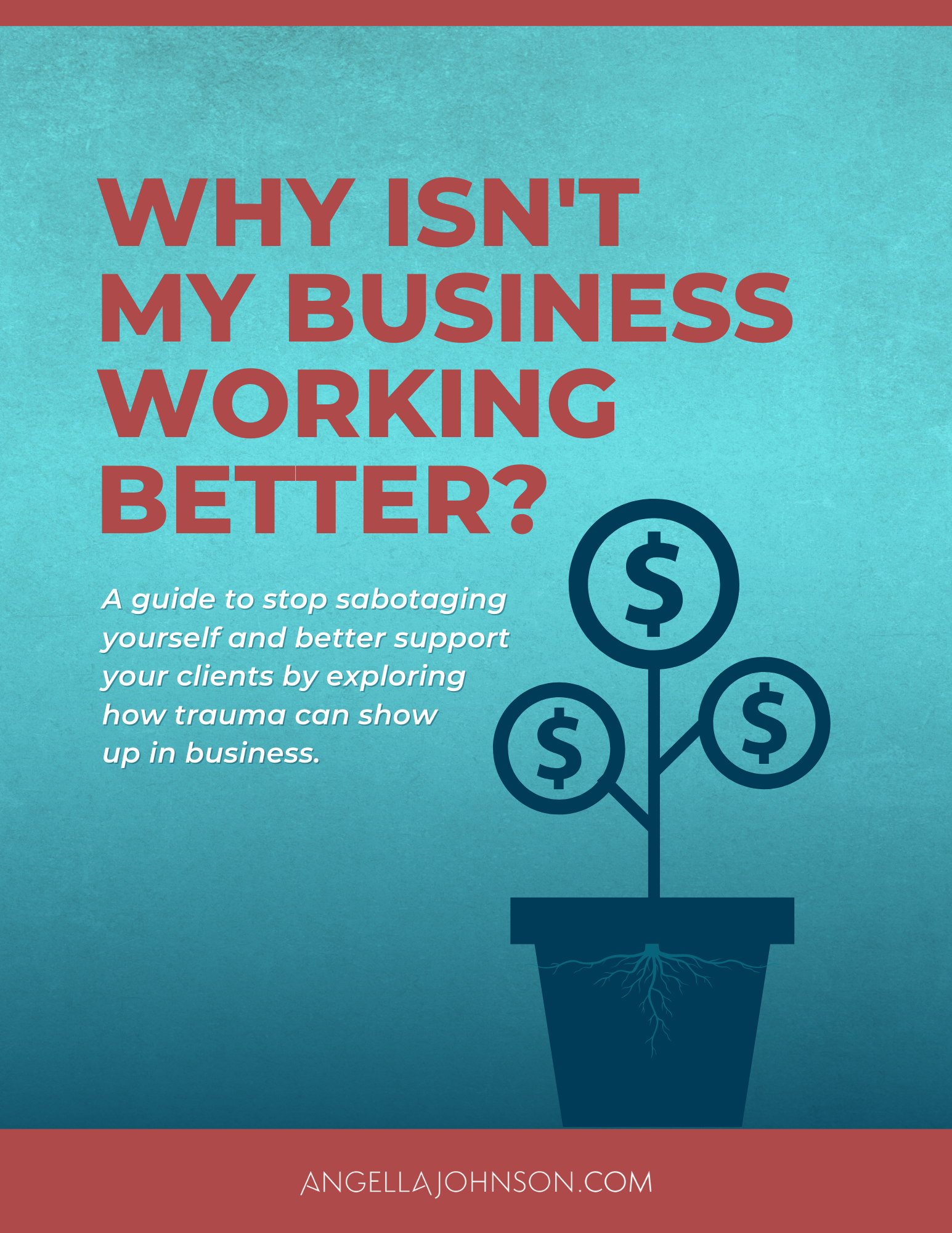I taught a workshop today all about messaging and my stance is this: We don’t need pain points in order to market ourselves.
Having compassion for our clients and their challenges, and helping name those challenges, is VERY DIFFERENT than using those “pain points” against people as a way to motivate change or as a way to encourage people to buy our things.
I have yet to meet a person who has created lasting change by using shame and self-judgment. Have you?
Yet a lot of the marketing and messaging we get is using our challenges against us. If we just had more willpower. If we just had the right formula… If you just want it bad enough…
Let me geek out a little bit: You’ve likely heard of Cognitive Dissonance, right?
It’s where your beliefs and actions don’t line up. For example, you believe the meat industry is awful, yet you still eat meat. (Don’t worry, I’m not about to give you a vegan lecture here… ‘cuz I’m not Vegan and I struggle with this actual dilemma.)
The Cognitive Dissonance theory tells us that we will either try ways to justify that gap between our beliefs and actions or eventually do something to change either our belief or our behavior.
What does this have to do with pain points in our marketing and messaging?
It has everything to do with it. You see, clever marketers out there create cognitive dissonance FOR YOU as a way to make you believe that your actions aren’t good enough. We see this a lot in the diet culture world.
Don’t like what you look like (because diet culture tells us that thin, cis-gender, white, and pretty is what we’re supposed to look like) – then here is the next diet, pill, surgery, blah, blah… to help you feel better about yourself.
Not making enough money?
Here’s the formula that will make you rich because you don’t want to be broke and pathetic, right? (ugh, this is what I still see in online marketing and it’s just so damn gross)
Here’s the formula that will make you rich because you don’t want to be broke and pathetic, right? (ugh, this is what I still see in online marketing and it’s just so damn gross)
See? messages like the two examples I just shared create cognitive dissonance. And as humans, we don’t like how uncomfortable it feels to have a gap like that between what we believe and what we are doing to make a change. So people buy the magic pill. BUT, it doesn’t make them feel better. It just perpetuates the cognitive dissonance.
The bottom line is marketers can be very good at making you feel bad enough about something that’s not working in your life and conveniently, they have the pill or formula to fix it.
Don’t buy into the BS.
The good news with all of this is when we spot what’s happening, we can opt-out of it as a consumer AND as a business owner. We can buy and sell differently.
What if WE are not the problem????
What if the systems we are attempting to thrive in are the problem? When we realize this, we stop using shame and blame as a motivator because it doesn’t actually work. It may appear like it works for a short time, but it doesn’t last. It just ends up making people feel bad about themselves, which makes them look for the next potion to feel better. Conveniently, toxic marketers know this and always have something to sell you.
Most marketing and messaging tips that we’ve been taught are about focusing on the pain points.
The theory behind that is if the pain is bad enough then people will want to change it.
hmmm…
There’s one teeny-tiny, okay, GIANT problem with that: it perpetuates the deeply ingrained cycle of looking for what’s wrong.
And if we are always looking for what’s wrong, what are we creating? What are we emanating? What are we tolerating? What lie are we perpetuating?
No, this isn’t about sticking your head in the sand and using toxic positivity to always focus on the “positive.”
When something’s not working, self-honesty that it’s not working is a powerful tool.
What’s actually happening with MOST people is they’ve gotten so used to the problem, that it’s become their identity. It’s how they get by.
Life is manageable even with the “problems” that people say they want to change.
So how else do we activate lasting change? What could happen if we stopped using pain to drive us to change?
If you’re a coach who’s dedicated to helping people transform something in their life, stop asking what’s their top challenge.
It’s important to identify and name people’s experiences, but don’t keep people in their “pain points.”
Help people see what’s possible and if you’re the person to guide them to create it, then let them know.
Look at your home page – is it solely focused on “Are you tired of…” questions and pain points?
Or are you calling people out of their comfort zone into what they desire?
Pain points can suck it. The end. ☺️


